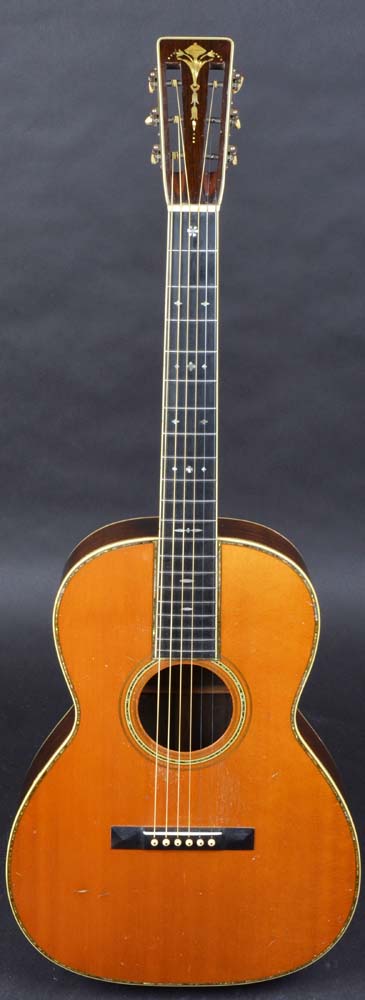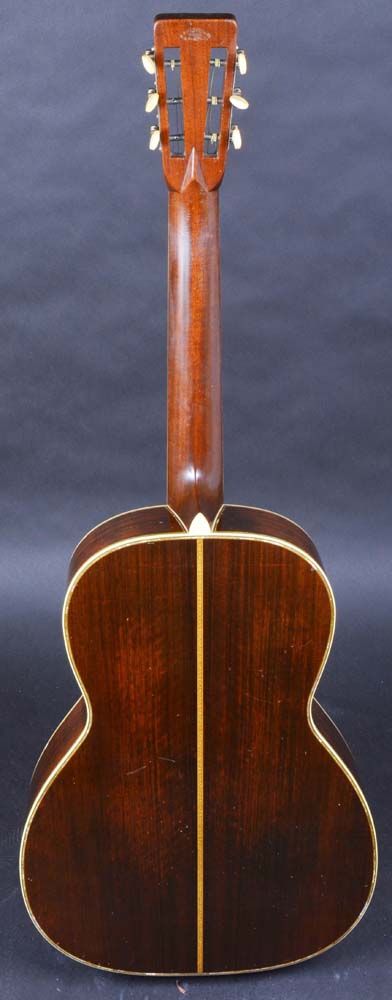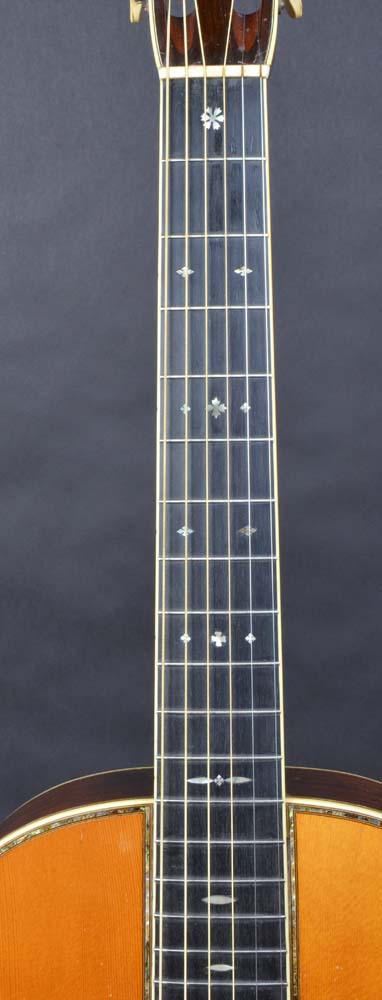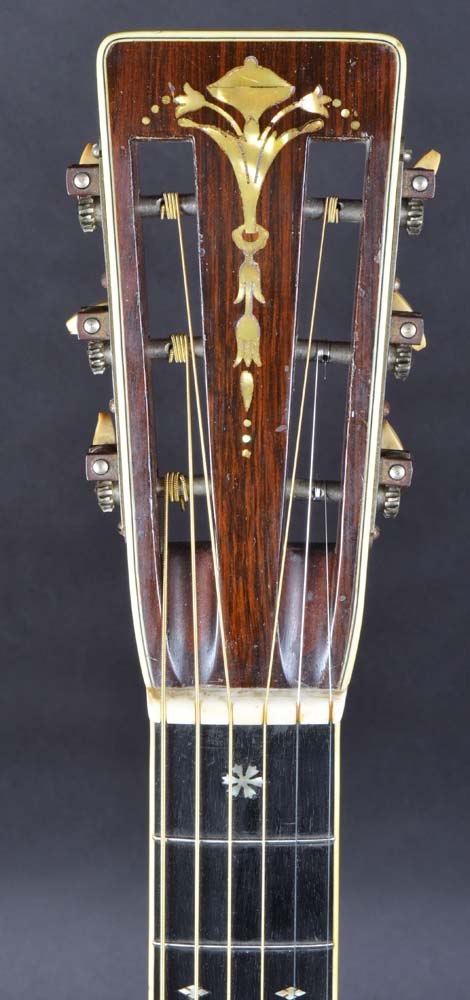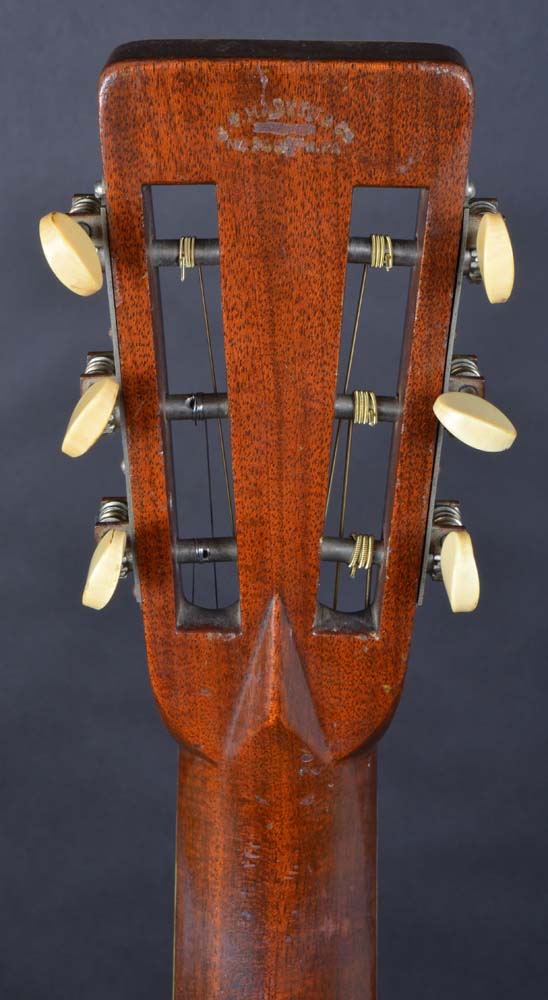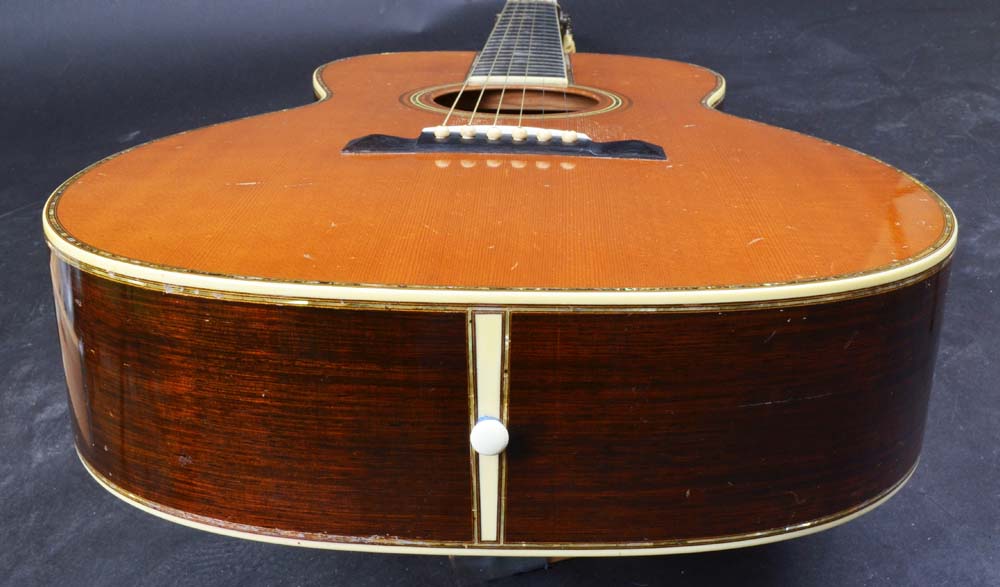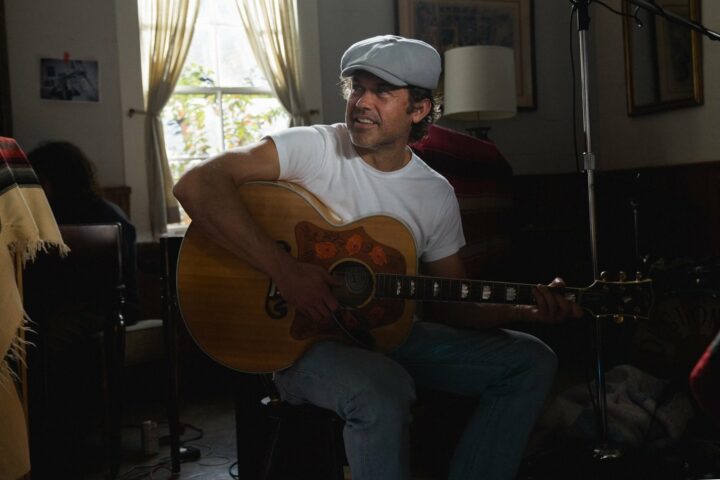1930 Martin 000-45
Of all of the guitars I’ve covered in our Catch of the Day column, I think this 1930 Martin 000-45 is the guitar I covet most of all. Visually, I think the Gibson 16-inch L-5 and the National Style 2 Tricone are prettier, but I feel that Martin’s 12-fret 000 is just about the best all-around guitar I have ever played. It’s not an ugly guitar by any stretch of the imagination, but its design is very subtle and you have to get really close to see how well it’s made. The details don’t really come across in these photos, but when you see how carefully the abalone trim is fitted (the right angle joints are all mitered); how gracefully the heel is carved; and how elegantly the pyramid bridge is shaped, you can’t help but be impressed. And when you reflect these are just cosmetic features that don’t affect the performance or tone at all, you just have to fall in love with the mad meticulousness of it all.
These days, most players will reject a 12-fret steel string out of hand, thinking that they need constant access to the higher frets. For years I felt that way myself, until I really looked at the type of playing I did on a flattop and I figured out that I rarely ventured above the ninth fret. That’s when I started looking at 12-frets seriously and discovered that they are really versatile. Martin’s 12-fret 000s are very loud with an excellent bass to treble response and a depth of tone that 14-fret 000s lack. The reason for this is twofold. One, the body on a 12-fret is actually larger than the body on a 14-fret, a difference which produces more volume. And two, on a 12-fret, the bridge is closer to the more flexible center of the top, which allows the strings to drive the top more efficiently. To get 14 frets clear of the body, Martin shortened the upper bout, which made the body smaller. And they moved the bridge a little closer to the soundhole, and nearer to the middle of the X in the cross-braces, which is the stiffest part of the top. I’ve played quite a few 12-fret Martin 000s from this 1930-era and while each one has been amazing, the style 45s were just a little bit better. Martin used nice dense, straight-grained Brazilian rosewood and spruce that looks like the grain lines were measured and drawn on. As you might expect, Martin 000-45s from 1930 are scarce, they only made 21 that year, and when they turn up in fine condition like this one, they sell for a fortune. This example is a mere $150,000 and you can find it gracing the wall at Carter Vintage Guitars.
